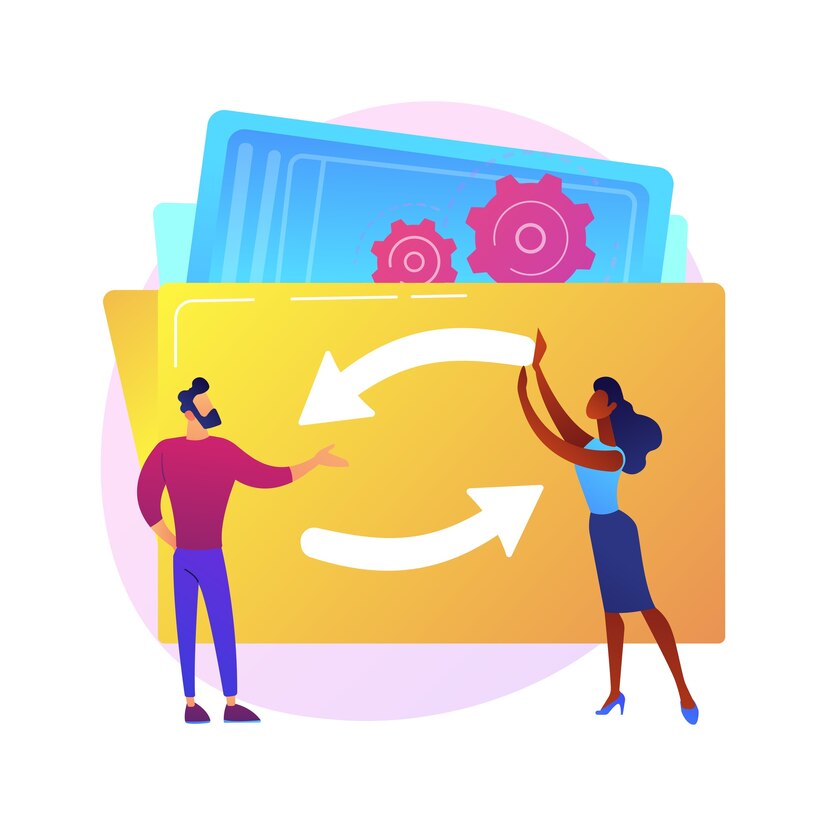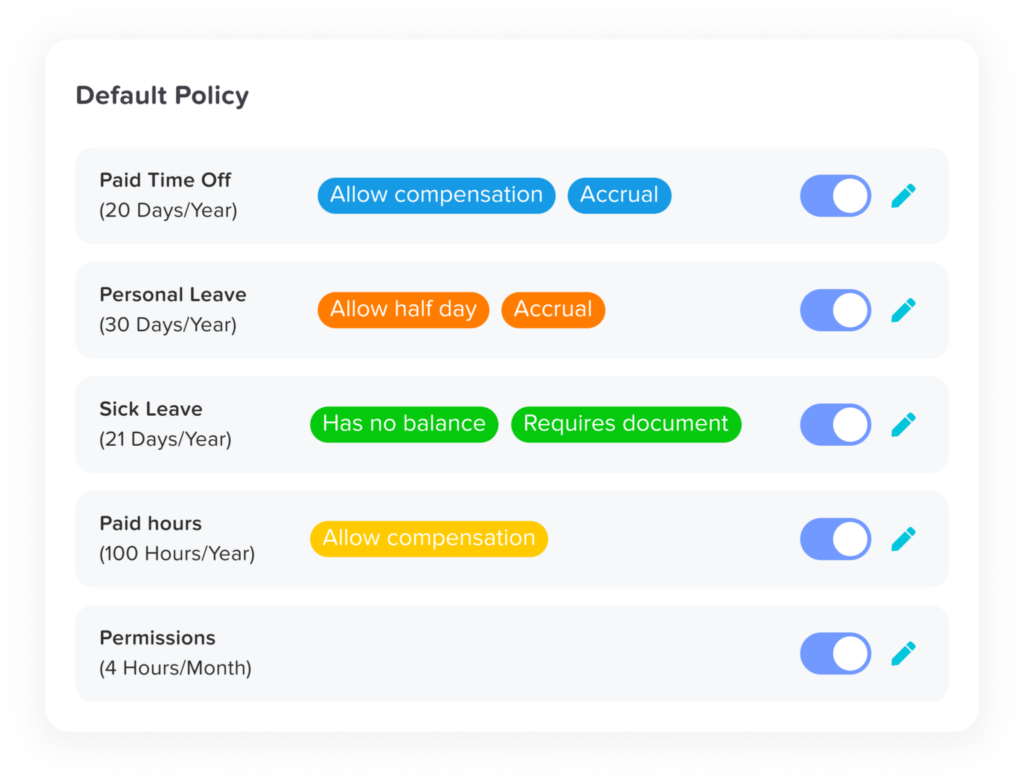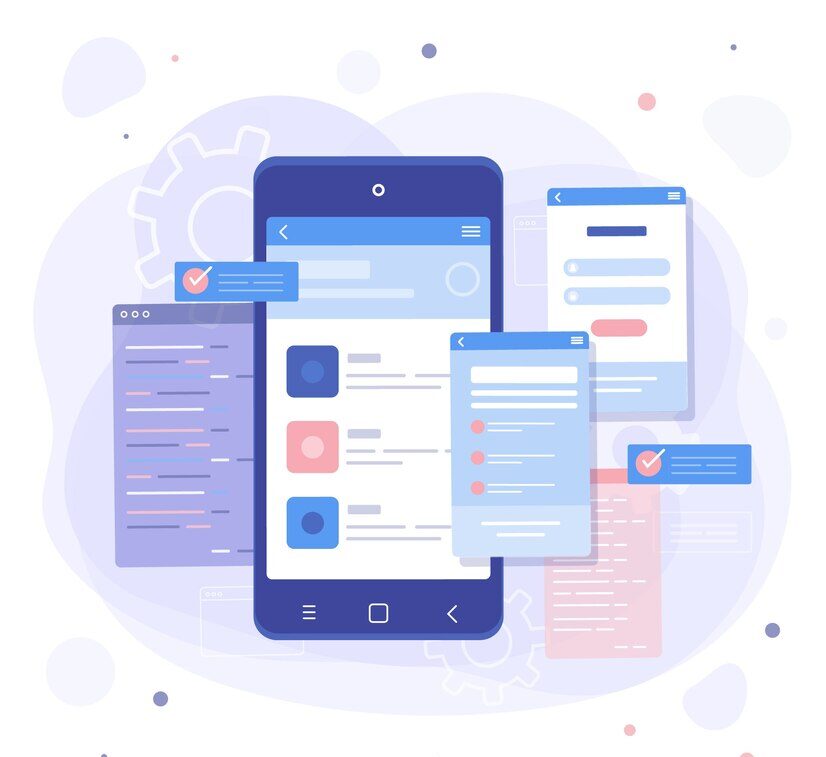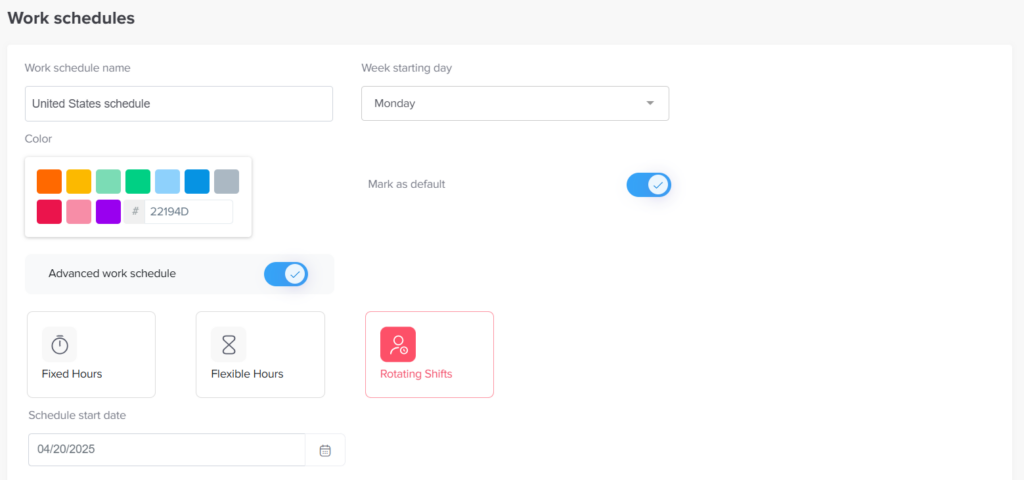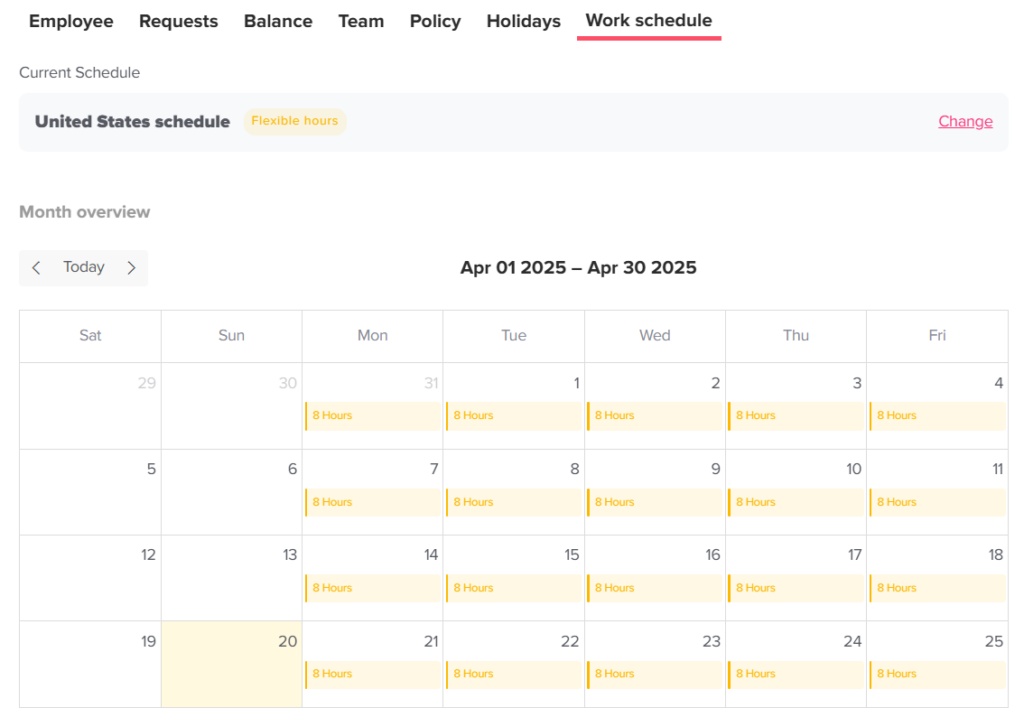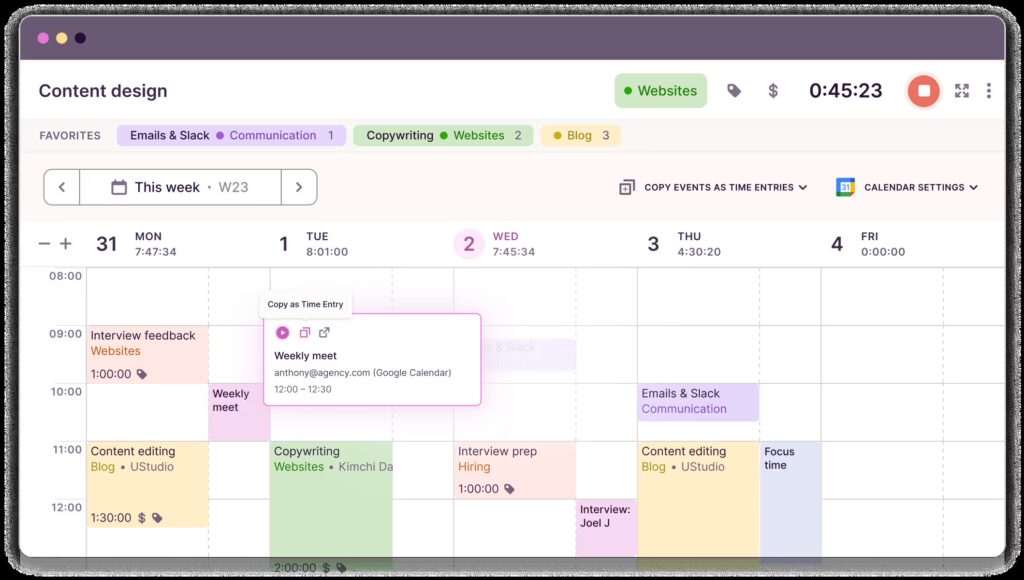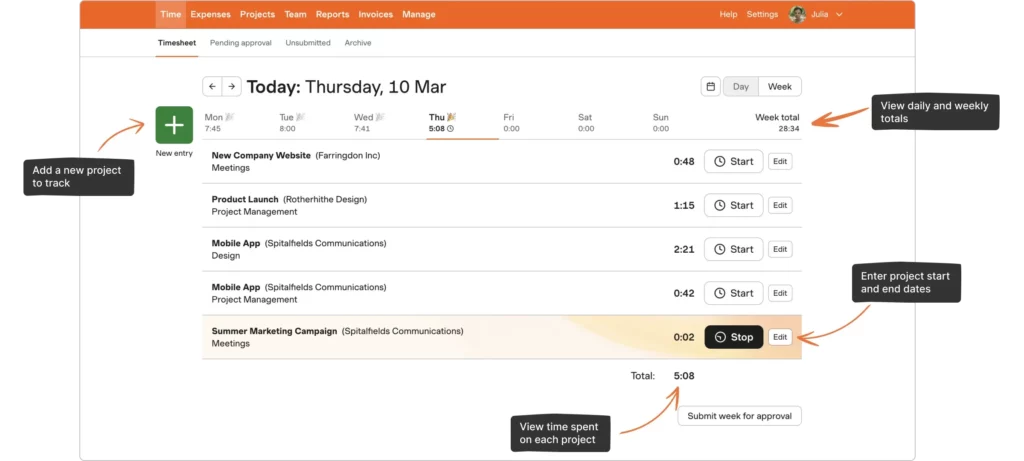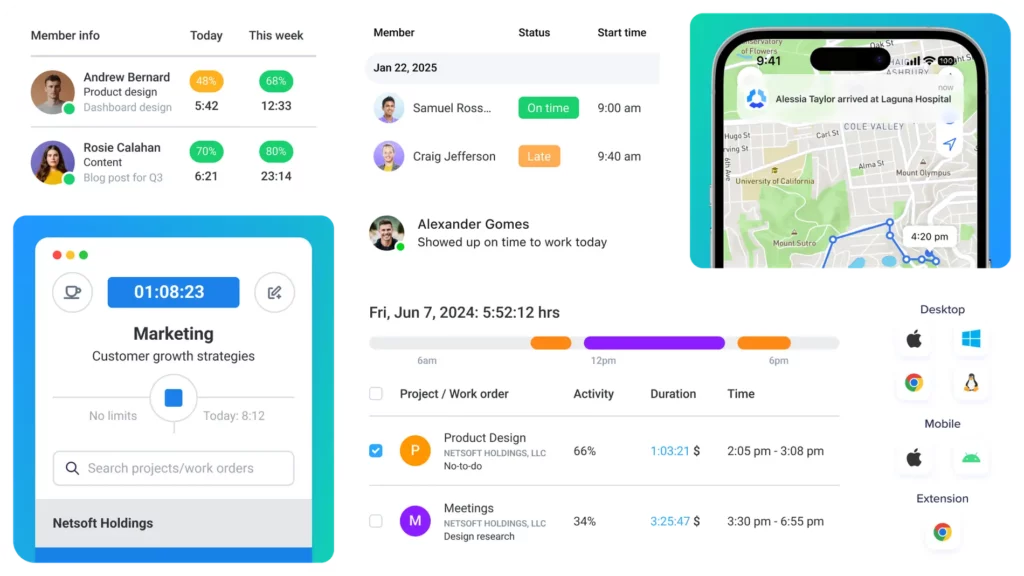Employee leave tracking often seems like a simple administrative task, until things start to slip through the cracks.
A few missed entries, forgotten approvals, or misunderstood policies can snowball into payroll errors, team scheduling chaos, compliance risks, and employee frustration.
Without a structured system, even the most well-meaning HR teams find themselves firefighting instead of focusing on what truly matters: supporting people and driving organizational growth.
Simplifying employee leave tracking isn’t just about using software, it’s about creating clarity, consistency, and confidence for everyone involved. Here’s how to build a smarter, stress-free system that actually works.
Move Away from Manual Tracking
Relying on spreadsheets, shared calendars, or endless email threads to track employee leave might feel familiar, but it’s also a ticking time bomb.
Manual systems depend heavily on human accuracy, and the smallest mistake (like one missing date or duplicated entry) can throw off entire payrolls or leave schedules.
Common challenges with manual systems include:
High risk of human error and inconsistent data entry.
Zero real-time visibility for managers or HR.
Disconnected data spread across departments.
Huge administrative effort during audits or annual reviews.
These problems don’t just waste time, they erode trust and transparency between employees and HR.
The fix? Move to a digital leave management system.
Modern tools automate the boring stuff, updating balances, logging records, and applying company policies instantly.
They allow multi-user access, maintain centralized data, and automatically back everything up to prevent loss.
When HR teams aren’t trapped in spreadsheets, they can focus on strategic priorities like engagement, growth, and well-being.
Choose the Right Leave Tracking Software
Not all leave management systems are created equal. Choosing the right one isn’t just about features, it’s about finding a long-term partner for efficiency, compliance, and culture.
When evaluating software, go beyond the surface. Look for tools that fit your team’s size, growth stage, and complexity. A great platform should be customizable, scalable, and simple enough for everyone to use, from interns to executives.
Key features to look for:
Custom leave policies: Configure different rules for vacation, sick leave, or personal days.
Multi-country support: Ideal for global teams with local labor laws and public holidays.
Automatic accruals: Leave balances update in real time based on tenure or hours worked.
Flexible approval workflows: Set different layers of authorization by department or role.
Smart notifications: Get instant alerts for approvals, low balances, or overlapping requests.
Team calendars: See who’s off before approving new leave to prevent staffing gaps.
Reports and analytics: Track patterns, forecast absences, and identify burnout risks.
Software like Day Off or similar intuitive platforms make leave tracking effortless, whether you’re managing a small startup or a fast-growing enterprise.
Remember, your leave software should simplify HR life, not complicate it.
Set Clear and Comprehensive Leave Policies
A strong leave management system means little without clear policies behind it.
Vague or outdated rules lead to confusion, inconsistent treatment, and a flood of “Can I…?” emails to HR.
A well-defined, written leave policy sets expectations upfront and protects both the company and employees.
Your leave policy should clearly outline:
Types of leave: PTO, sick leave, parental leave, bereavement, jury duty, volunteer days, and more.
Eligibility rules: Who qualifies and after how long.
Accrual structure: How leave is earned, monthly, annually, or hourly.
Carryover limits: How much unused leave rolls over.
Payout conditions: Whether unused leave is paid out at termination or resignation.
Notice requirements: How early requests should be made.
Approval hierarchy: Who approves what and how disputes are resolved.
Once the policy is ready, make sure it’s accessible, include it in onboarding materials, upload it to your HR portal, and communicate updates regularly.
Transparency reduces HR workload, fosters fairness, and ensures legal compliance.
Automate Leave Requests, Approvals, and Records
Automation is the secret ingredient to transforming leave management from messy to magical.
An automated workflow not only saves time but also eliminates ambiguity.
Here’s what a modern, efficient process looks like:
The employee submits a request via the HR app or self-service portal.
The system instantly notifies the approving manager.
The manager reviews and clicks approve (or reject).
Both HR and the employee get notified automatically.
The employee’s leave balance and shared team calendar update instantly.
This digital trail ensures every action is tracked, no requests are lost, and no leave exceeds entitlement.
Plus, automation prevents awkward “I didn’t see your email” moments, everyone stays informed and accountable.
For HR, this means fewer manual entries, fewer arguments, and far more time to focus on building a better employee experience.
Empower Employees with Self-Service Tools
The best HR systems are the ones employees actually love using.
Giving staff access to self-service tools creates transparency and autonomy. Instead of chasing HR for their leave balances or policy clarifications, employees can log in anytime to:
View available leave days and balances.
Submit and track requests in real time.
Review approval history and upcoming holidays.
Plan absences around team schedules.
This self-sufficiency benefits everyone.
Employees feel trusted and informed, while HR reduces repetitive questions and micromanagement.
It builds a culture of ownership and respect, because nothing says “we trust you” like letting employees manage their own time off.
Monitor Trends with Leave Analytics
Leave data isn’t just numbers, it’s insight.
Behind every absence lies a story: stress, workload, engagement, or life outside work. Analyzing leave patterns helps HR spot these stories early and act with empathy and strategy.
With smart analytics, you can:
Identify absenteeism trends, like recurring Monday absences.
Forecast seasonal shortages or high-demand leave periods.
Detect burnout risks among employees who rarely take breaks.
Track financial liabilities from unused or excessive leave.
Comprehensive dashboards help visualize these insights clearly.
Instead of reacting to issues, HR can predict and prevent them, creating a healthier, data-driven workplace where well-being and productivity coexist.
Ensure Compliance with Labor Laws
Labor law compliance isn’t optional, it’s essential.
Different countries (and even regions) have unique rules around leave entitlements, paid holidays, and sick pay. Missing a regulation can result in hefty fines, legal challenges, or damage to your brand reputation.
To stay compliant, HR should:
Track jurisdiction-specific leave requirements.
Include mandatory public holidays for each region.
Handle paid/unpaid leave correctly based on local law.
Maintain clear audit trails of all leave transactions.
Update policies as soon as regulations change.
Many modern leave management systems automatically update to match evolving laws, saving HR from manually tracking every change.
By aligning compliance and automation, you protect both your company and your employees.
Create a Culture That Supports Leave
Even with the best systems, policies, and dashboards, none of it matters if employees feel guilty about taking time off.
A healthy leave culture is one where rest is respected, balance is celebrated, and time off is seen as a productivity tool, not a weakness.
Here’s how to build that:
Encourage leaders to take their own leave publicly, it sets the tone.
Normalize using vacation days by celebrating employees who disconnect.
Avoid rewarding “always available” behavior.
Check in on those who haven’t taken time off in months.
Communicate that recovery is part of performance.
When employees know they can recharge without judgment, they return more creative, focused, and loyal.
It’s not just about preventing burnout, it’s about creating sustainable success.
Plan for Overlaps and Critical Periods
One of the trickiest parts of leave management is keeping operations running when multiple employees are off simultaneously.
Without foresight, you risk project delays, customer dissatisfaction, and unnecessary stress.
To avoid chaos:
Limit the number of people who can be off at once in key departments.
Define blackout periods during crucial business phases.
Encourage early vacation requests to manage expectations.
Prepare contingency plans for critical roles.
When planned properly, time off doesn’t disrupt productivity, it strengthens it by ensuring every absence is anticipated and managed proactively.
Continuously Improve and Adapt
Employee expectations, technology, and labor laws are constantly evolving.
Your leave management approach should, too.
Continuous improvement means:
Reviewing policies annually for clarity and fairness.
Gathering employee feedback about system usability.
Updating your tools as your workforce grows.
Benchmarking against industry best practices.
Think of leave tracking as a living process, one that adapts with your people and your business.
An HR team that evolves stays efficient, compliant, and trusted.
Frequently Asked Questions (FAQ)
Why is employee leave tracking so important?
Accurate leave tracking ensures fairness, compliance, and operational stability.
When companies manage leave properly, employees feel confident taking time off without worrying about errors or misunderstandings. It also helps HR prevent scheduling conflicts, maintain payroll accuracy, and meet labor law requirements, all while promoting a healthy work-life balance.
What’s the biggest problem with manual leave tracking?
Manual tracking through spreadsheets or emails is time-consuming and error-prone.
Entries can easily be missed or duplicated, leading to inaccurate balances and payroll issues. It also lacks real-time visibility, making it hard for managers to see who’s available or plan for absences.
Automating this process eliminates mistakes and gives everyone a clear, up-to-date view of leave data.
How does leave management software help HR teams?
Leave management software automates tedious administrative work like approvals, accrual calculations, and notifications.
It gives HR teams a centralized dashboard where they can track all leave requests, monitor patterns, and generate reports instantly.
This means less paperwork, fewer disputes, and more time for HR to focus on people strategy and employee engagement.
What features should I look for in a leave tracking system?
A good leave management system should include:
Customizable leave types and rules
Automatic accrual calculations
Approval workflows and real-time notifications
Team calendars and role-based access
Data export and reporting tools
Compliance updates for different regions
Choosing a system with these features ensures accuracy, scalability, and an excellent employee experience.
How do automated leave approvals work?
Automation removes the back-and-forth of email approvals.
Employees submit requests through a portal or app, which instantly notifies their manager. Once approved or denied, both HR and the employee are updated automatically.
The system then adjusts the employee’s balance and updates the shared calendar, no manual entry needed.
Can employees view or manage their own leave?
Yes! Modern self-service portals allow employees to check their current leave balance, submit requests, view upcoming public holidays, and track approval status, all in one place.
This transparency builds trust, reduces confusion, and saves HR countless hours answering repetitive questions.
How can leave analytics improve company performance?
Leave analytics go beyond tracking absences, they reveal patterns that can improve business planning.
For instance, consistent Friday absences might signal disengagement, or unused vacation balances could indicate burnout risk.
With data insights, HR can act early to improve morale, prevent overwork, and keep productivity balanced year-round.
What happens if a company fails to comply with labor laws on leave?
Ignoring labor regulations can lead to financial penalties, legal action, and serious reputational damage.
Every region has its own rules about minimum leave entitlements, paid sick days, and public holidays.
Using leave software that stays updated with local laws helps ensure ongoing compliance and protects both the company and employees.
How can companies encourage employees to actually take their leave?
Creating a supportive leave culture starts from the top.
When leaders take time off and encourage their teams to do the same, it normalizes rest as part of productivity.
Companies can also remind employees of unused balances, celebrate vacations as part of company culture, and ensure workloads are covered so no one feels guilty stepping away.
How often should HR review or update leave policies?
Ideally, HR should review leave policies at least once a year, or sooner if new laws are introduced or the company expands to new regions.
Regular reviews ensure that policies stay fair, compliant, and aligned with employee needs.
Gathering feedback from staff also helps refine policies to make them more transparent and effective.
What are the signs your leave management system needs an upgrade?
If your current system relies on manual updates, lacks reporting features, or doesn’t integrate with payroll, it’s time for an upgrade.
Modern platforms offer automation, mobile access, and analytics, all essential for growing organizations.
The goal is a system that saves time, prevents errors, and scales as your workforce expands.
How can better leave tracking improve employee satisfaction?
Transparent and efficient leave tracking builds trust.
When employees know their requests are processed fairly and balances are accurate, they feel respected and valued.
This sense of fairness contributes to higher engagement, lower turnover, and a more positive company culture.
Conclusion
Simplifying employee leave tracking is not just about digitizing a form, it’s about transforming how your organization manages time, trust, and transparency.
By replacing manual chaos with automation, empowering employees with self-service tools, enforcing fair policies, and nurturing a healthy leave culture, HR can move from administrative overload to strategic impact.
When leave is managed smartly, people feel valued, rested, and ready to contribute their best.
In the end, better leave tracking doesn’t just save time, it builds stronger teams, happier employees, and a more resilient business.






